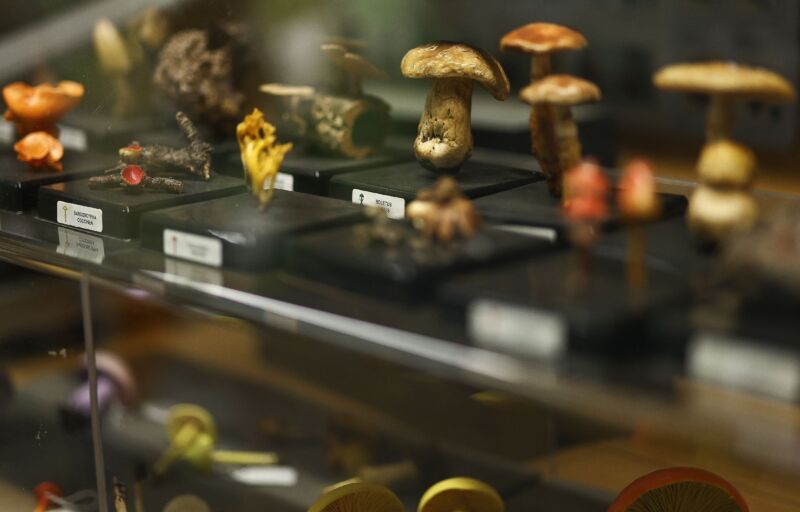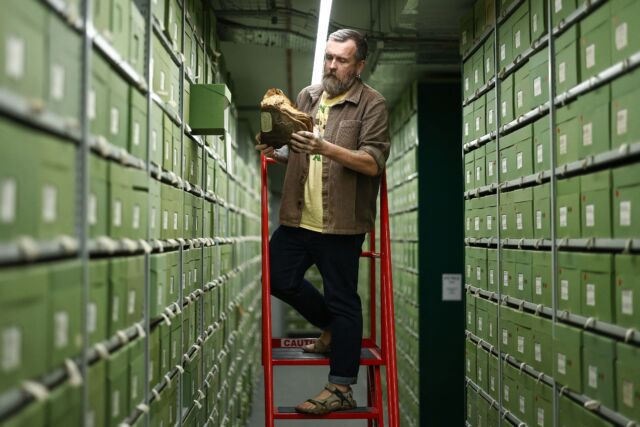
It’s arduous to miss the headliners at Kew Gardens. The botanical assortment in London is house to towering redwoods and big Amazonian water lilies able to holding up a small little one. Every spring, its large greenhouses pop with the Technicolor shows of a number of orchid species.
However for the actually great things at Kew, you need to look beneath the bottom. Tucked beneath a laboratory on the backyard’s japanese edge is the fungarium: the biggest assortment of fungi anyplace on the earth. Nestled inside a collection of inexperienced cardboard bins are some 1.3 million specimens of fruiting our bodies—the components of the fungi that seem above floor and launch spores.

“That is mainly a library of fungi,” says Lee Davies, curator of the Kew fungarium. “What this enables us to do is to give you a reference of fungal biodiversity—what fungi are on the market on the earth, the place you could find them.” Archivists—sporting mushroom hats for some motive—float between the cabinets, busily digitizing the huge archive, which incorporates round half of all of the species identified to science.

Within the hierarchy of environmental causes, fungi have historically ranked someplace near the underside, Davies says. He himself was delivered to the fungarium towards his will. Davies was working with tropical vegetation when a staffing reshuffle introduced him to the temperature-controlled environs of the fungarium. “They moved me right here in 2014, and it’s superb. Neatest thing ever, I find it irresistible. It’s been a complete conversion.”
Davies’ personal epiphany echoes a wider awakening of appreciation for these missed organisms. In 2020, mycologist Merlin Sheldrake’s e-book Entangled Life: How Fungi Make Our Worlds, Change Our Minds, and Form Our Futures was a shock bestseller. Within the online game and HBO collection The Final of Us, it’s a fictional brain-eating fungus from the genus Cordyceps that sends the world into an apocalyptic spiral. (The Kew assortment features a tarantula contaminated with Cordyceps—fungal tendrils attain out from the delicate gaps between the useless insect’s limbs.)
Whereas the broader world is waking as much as these fascinating organisms, scientists are attending to grips with the essential position they play in ecosystems. In a laboratory simply above the Kew fungarium, mycologist Laura Martinez-Suz research how fungi assist sequester carbon in the soil, and why some locations appear significantly better at storing soil carbon than others.
Soil is a large reservoir of carbon. There are round 1.5 trillion tons of natural carbon saved in soils internationally—about twice the quantity of carbon within the environment. Scientists used to suppose that the majority of this carbon entered the soil when useless leaves and plant matter decomposed, nevertheless it’s now changing into clear that plant roots and fungi networks are a essential a part of this course of. One study of forested islands in Sweden discovered that almost all of carbon within the forest soil really got here from root-fungi networks, not plant matter fallen from above the bottom.
